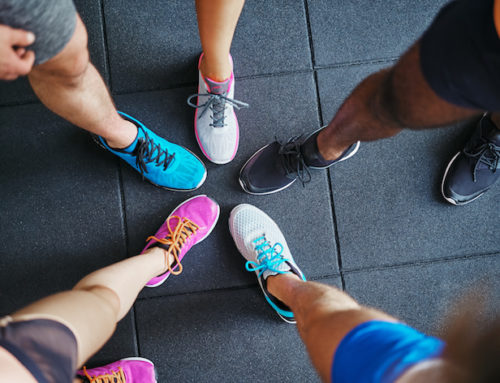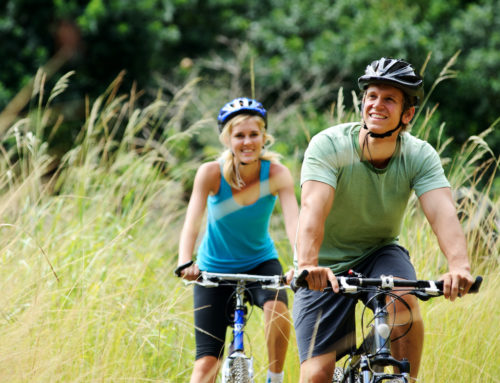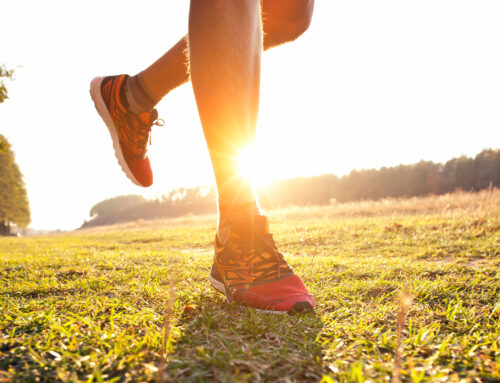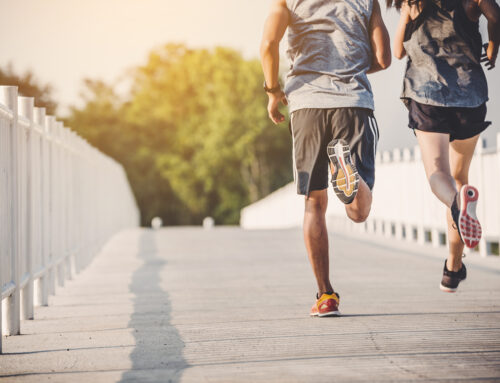What is the Best and Worst Surface for Running On?
You’re likely to train on a whole variety of surfaces during your running career. Concrete, grass and sand are just a few examples of the types of surfaces you’ll probably encounter, but are you aware of how each can affect your body?
In this guide we’ve explained some of the pros and cons of the most common running surfaces to give you an insight into the effect they can have.
Grass
Pros
- The soft nature of grass means the level of impact on your body is reduced, making it a fairly kind surface to your muscles, bones and joints.
- It’s a good surface to train on as it makes your muscles work hard, while also providing cushioning to your feet.
Cons
- You have to be careful when running on grass as it can sometimes be uneven, which is a particular problem for runners with unstable ankles.
- The soft terrain doesn’t provide as much stability as some of the harder surfaces, which can cause your feet to pronate or roll inwards and your ankle to twist.
- It also becomes slippery and muddy when wet.
Synthetic Track
Pros
- It’s a springy, flat and smooth surface which is forgiving on the body.
- Most running tracks are exactly 400 metres, making measuring distances and timing sessions easy. This makes it ideal for speed training.
Cons
- The two long curves you encounter will put more stress than usual on your ankles, knees and hips. If you always run in the same direction on these tracks (usually anticlockwise), you’ll place greater strain on your left side which can lead to muscle imbalances.
- Running lap after lap can quickly become tedious if you’re going on a long distance run.
Treadmill
Pros
- Treadmills provide a smooth and even surface without any trip hazards or obstacles to worry about.
- Most treadmills are padded, reducing impact and making them easier on the legs.
- It’s easy to hit the desired pace as you’re in complete control of the speed and incline at which you run at.
- As you’re indoors you can run at any time of the day or night without the risks you’d normally face outside. You also don’t have to worry about the weather, cyclists, passers-by or any other external factors.
Cons
- Running on the same spot without a change in scenery can quickly lead to boredom.
- You don’t get the benefit of fresh air and a natural breeze, which causes some runners to sweat excessively.
- Treadmill machines can be expensive to buy. The price of a gym membership may not be justified either if all you were going to the gym for was to use the treadmill.
Asphalt (Road)
Pros
- It’s a predictable and consistent surface which makes it easier to keep up a steady pace.
- It’s a firm surface that you can run on all year round (with the exception of ice and heavy rain)
- It’s slightly softer and therefore easier on your body than concrete. Less strain is placed on the Achilles tendon.
Cons
- You need to take care to avoid cambers and potholes.
- Like any hard surface it can jolt the joints. The impact forces transmitted through your feet and lower legs also tend to be greater, which can cause your calves and shins to become sore.
See more: Shin Splints – Everything You Need to Know About Shin Splints
Sand
Pros
- Sand is very low-impact and is great for working out your calf muscles (especially in dry and deep sand) without risking any impact damage to your joints.
- When running on soft sand, you’re required to pick up your knees and push off harder, which helps to improve strength as well as running technique and stamina.
- Running through sand dunes provides good resistance training and helps to strengthen muscles in your legs.
Cons
- The softness of sand is tough on the Achilles tendon.
- Running on the soft surface requires additional effort and can therefore be very exhausting.
- Its shifting, uneven nature can place additional stress on your muscles, ligaments and tendons.
Concrete (Pavement)
Pros
- The vast majority of pavements tend to be smooth and flat.
- They’re easily accessible and convenient for many runners.
- Don’t have to worry about avoiding traffic.
Cons
- Obstacles such as the kerb and pedestrians can lead to injury.
- It is high-impact so isn’t as forgiving on your legs as other surfaces.
Woodland/Mountain Trails
Pros
- Frequent changes in running direction support and stabilise your muscles and boost flexibility.
- It’s a fairly low-impact and joint-friendly surface.
- Normally located in scenic areas for you to enjoy while training.
Cons
- Uneven surface means it can be easy to twist your ankle.
- Often muddy and slippery.
- Need to be wary of trip hazards such as tree roots.
All surfaces have benefits and drawbacks for your running training, so it’s difficult to categorically state that one is superior to the others. Personal preference and what you have available will largely influence where you take your runs, but we recommend switching things up every now and again to keep your workouts fresh and exciting.
Remember that our virtual challenges can be completed anywhere! It doesn’t matter if you run on a treadmill, on grass or on a track, as long as you complete the miles before the end of the month you’ll receive your rewards!
Find out more or sign-up today!
See more: How to Prepare for a Running Race – Race Tips & Advice
See more: Running Tips for Beginners



